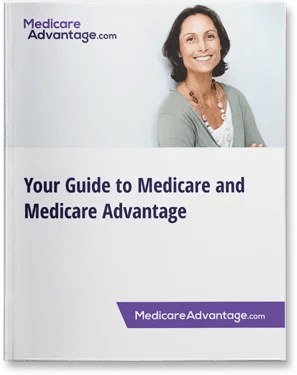If you find Medicare confusing, you're not alone. A recent Kaiser Family Foundation study found 30% of Medicare beneficiaries have difficulty understanding the program or comparing their coverage options. Among people with poorer health, that number jumps to 41%. It's understandable, as Medicare is a complicated system that spans both government and private sectors.
In this article, we'll talk you through the Medicare program, explaining it simply. You can then navigate the system and make the most of your coverage.
What is Medicare? Insurance for Dummies
Medicare is a federal government health insurance program that works to reduce the costs of essential healthcare so people can access the care they need.
Several groups of people can receive Medicare benefits, including:
- People aged 65 and older who are American citizens or lawful permanent residents who have lived in the U.S. for five consecutive years
- Younger people with qualifying disabilities
- People with end-stage renal disease
The Four Parts of Medicare
Medicare consists of four different parts, which include part A, B, C, and D:
- Part A is hospital insurance. It covers services when you're an inpatient at a hospital, skilled nursing facility or hospice center.
- Part B is medical insurance. It covers outpatient services such as certain doctor visits, outpatient tests and medical equipment.
- Part C plans combine Part A and Part B benefits and are sold by private insurance companies. Often called Medicare Advantage, many Part C plans also include benefits not found in Original Medicare.
- Part D is prescription drug coverage.
Original Medicare vs. Medicare Advantage
Original Medicare consists of Medicare Parts A and B. You can choose to receive Medicare benefits from Original Medicare or to receive these benefits through a Medicare Advantage plan.
Legally, Medicare Advantage plans must provide equal coverage to Original Medicare. Most Medicare Advantage plans include other benefits that are not found in Medicare Part A or Part B.
Understanding the differences between the two options can help you decide which is most suitable. Here are some ways that these types of Medicare insurance can vary:
- Administration: The federal government manages Original Medicare through the Centers for Medicare & Medicaid Services (CMS), whereas private health insurance companies operate Medicare Advantage plans.
- Prices: Original Medicare has set costs for premiums, copayments, coinsurance and certain other costs. While people with high incomes may pay an income adjustment with their Part B premiums each month, most Part B beneficiaries pay the standard premium amount.
With Medicare Advantage plans, the out-of-pocket expenses are more varied because the private insurance providers can set their prices. Premiums, deductibles, copays and other costs can vary from one plan to the next.
- Spending limits: Medicare Advantage plans include an annual out-of-pocket spending limit for plan members. In contrast, there is no yearly out-of-pocket spending maximum for people who have Original Medicare.
- Service providers: Original Medicare beneficiaries can receive health care services from any provider who accepts Medicare.
Some Medicare Advantage plans, such as HMO Medicare plans, may restrict members to a network of providers. In some cases, you may be able to receive covered care outside of your plan network, but you’ll likely pay higher out-of-pocket costs than if you received care from an in-network provider. Network restrictions vary from one plan to the next, so be sure to check with the plan carrier for details.
- Drug coverage: Original Medicare doesn't include prescription drug coverage. Medicare beneficiaries may need to pay for a separate Part D plan to get coverage for most prescription drugs that are available at retail pharmacies. Part D coverage can also be found in a Medicare Advantage Prescription Drug (MA-PD) plan.
- Benefits: Original Medicare benefits are fairly standardized across the country. Medicare Advantage plan benefits, costs and availability can be different for some plans in some parts of the country than in others.
Simply put, Original Medicare benefits and costs are set by the federal government. Medicare Advantage plans can be more flexible in how they’re administered. The coverage, premiums, and out-of-pocket expenses can vary between providers and plans.
Because of the variations, if you're considering a Medicare Advantage plan, it's essential to research options in your area and find the provider and plan that suits you best.
Compare plans today.
Speak with a licensed insurance agent
What Medicare covers
Whether you choose Original Medicare or a Medicare Advantage plan, you will typically pay some cost-sharing amounts for deductibles, coinsurance and copayments when you receive covered services.
Some things Original Medicare can cover include:
- Inpatient hospital stays (covered by Part A): During the first 60 days of an inpatient hospital, you'll only pay the deductible, which is currently $1,736 per benefit period in 2026. For extended stays past 60 days, you'll also pay daily coinsurance amounts that depend on the length of your stay.
- Outpatient services (covered by Part B): After you meet your annual Part B deductible (which is $283 in 2026), you're typically responsible for the remaining 20% coinsurance for outpatient services, such as for certain doctor's visits or blood tests. Part B doesn’t include a limit on the amount of out-of-pocket spending you may be responsible for in a year for these copay or coinsurance costs.
The costs and rules with Medicare Advantage plans differ. When you receive care, you’ll likely pay a copay. For example, you might be responsible for paying $20 for a doctor's appointment, depending on the rules of your plan.
Likewise, for many Medicare Part D plans, there will be a copay required for some prescriptions. These copay amounts can vary depending on your plan and the type of prescription drug, such as whether it’s a generic or band name version of the drug.
Enrolling in Medicare
The federal government automatically enrolls many people in Medicare if they’re entitled to receive retirement benefits from the Social Security (SS) or Railroad Retirement Board (RRB) at least four months before they turn 65.
If you don't receive SS or RRB benefits, you may have to enroll in Medicare yourself. Once you do that, you may decide to also enroll in a Medicare Advantage plan and/or a Medicare Part D prescription drug plan.
Some beneficiaries choose to enroll in a Medicare Supplement Insurance (Medigap) plan to supplement their Original Medicare coverage. A Medicare Supplement plan helps pay for certain out-of-pocket Medicare costs such as deductibles, copays, coinsurance and more.
Medicare enrollment can depend on your individual circumstances, but typically you can sign up for Medicare starting three months before turning 65 or once you qualify through disability. If you’re not automatically enrolled in Medicare Part A and Part B, you'll have a seven-month enrollment window called your initial enrollment period, which starts three months before your 65th birthday and continues for three months after your birthday month.
You can sign up for Original Medicare in person at your local Social Security office or over the phone, or you can enroll in Medicare online.
The Take Home
Medicare may seem complicated at first, but taking time to understand it can help you secure the right coverage for your needs and make the most of your Medicare benefits.
If you are left wondering, "how can I contact medicare by phone?" you can always contact the medicare hotline for additional support.
Compare plans today.
Speak with a licensed insurance agent



